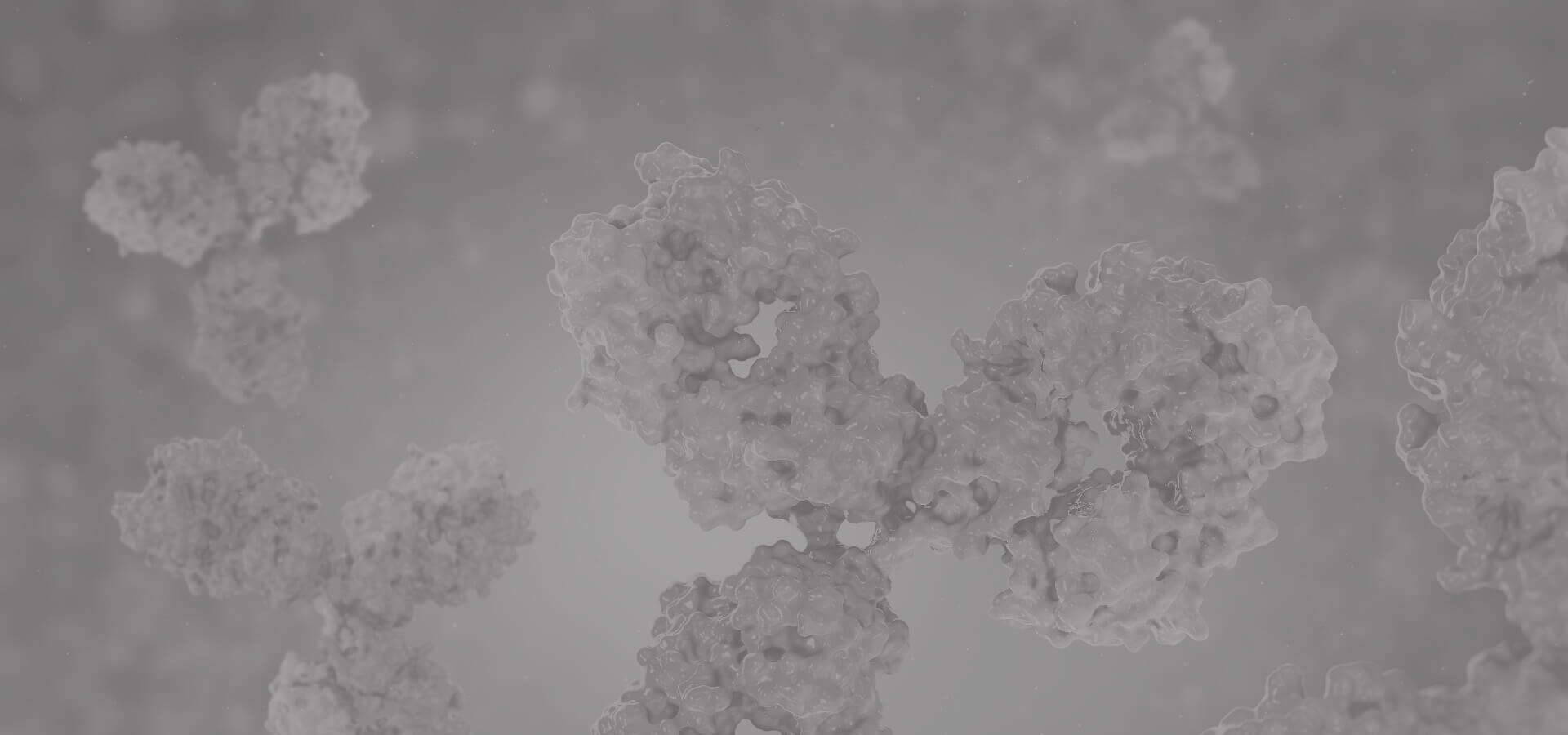CCR5
CCR5 (C-C Motif Chemokine Receptor 5 (Gene/Pseudogene)) is a Protein Coding gene. Diseases associated with CCR5 include West Nile Virus and Diabetes Mellitus, Insulin-Dependent, 22. Among its related pathways are Cytokine Signaling in Immune system and Akt Signaling. Gene Ontology (GO) annotations related to this gene include G-protein coupled receptor activity and phosphatidylinositol phospholipase C activity. An important paralog of this gene is CCR2.
Full Name
C-C Motif Chemokine Receptor 5 (Gene/Pseudogene)
Alternative Names
C-C Motif Chemokine Receptor 5 (Gene/Pseudogene); Chemokine (C-C Motif) Receptor 5; HIV-1 Fusion Coreceptor; CC-CKR-5; ChemR13; CMKBR5; CCR-5; Chemokine (C-C Motif) Receptor 5 (Gene/Pseudogene); C-C Motif Chemokine Receptor 5 A159A; Chemokine Recptor CCR5 Delta32;
Function
Receptor for a number of inflammatory CC-chemokines including CCL3/MIP-1-alpha, CCL4/MIP-1-beta and RANTES and subsequently transduces a signal by increasing the intracellular calcium ion level. May play a role in the control of granulocytic lineage proliferation or differentiation. Participates in T-lymphocyte migration to the infection site by acting as a chemotactic receptor (PubMed:30713770).
(Microbial infection) Acts as a coreceptor (CD4 being the primary receptor) of human immunodeficiency virus-1/HIV-1.
(Microbial infection) Acts as a coreceptor (CD4 being the primary receptor) of human immunodeficiency virus-1/HIV-1.
Biological Process
Calcium ion transport Source: UniProtKB
Calcium-mediated signaling Source: UniProtKB
Cell-cell signaling Source: UniProtKB
Cell chemotaxis Source: GO_Central
Cell surface receptor signaling pathway Source: ProtInc
Cellular defense response Source: ProtInc
Cellular response to lipopolysaccharide Source: UniProtKB
Chemotaxis Source: ProtInc
Cytokine-mediated signaling pathway Source: Reactome
Dendritic cell chemotaxis Source: BHF-UCL
Entry into host Source: Reactome
Fusion of virus membrane with host plasma membrane Source: Reactome
G protein-coupled receptor signaling pathway Source: UniProtKB
Immune response Source: GO_Central
Inflammatory response Source: GO_Central
MAPK cascade Source: UniProtKB
Positive regulation of cytosolic calcium ion concentration Source: GO_Central
Release of sequestered calcium ion into cytosol by sarcoplasmic reticulum Source: UniProtKB
Response to cholesterol Source: UniProtKB
Signaling Source: UniProtKB
Calcium-mediated signaling Source: UniProtKB
Cell-cell signaling Source: UniProtKB
Cell chemotaxis Source: GO_Central
Cell surface receptor signaling pathway Source: ProtInc
Cellular defense response Source: ProtInc
Cellular response to lipopolysaccharide Source: UniProtKB
Chemotaxis Source: ProtInc
Cytokine-mediated signaling pathway Source: Reactome
Dendritic cell chemotaxis Source: BHF-UCL
Entry into host Source: Reactome
Fusion of virus membrane with host plasma membrane Source: Reactome
G protein-coupled receptor signaling pathway Source: UniProtKB
Immune response Source: GO_Central
Inflammatory response Source: GO_Central
MAPK cascade Source: UniProtKB
Positive regulation of cytosolic calcium ion concentration Source: GO_Central
Release of sequestered calcium ion into cytosol by sarcoplasmic reticulum Source: UniProtKB
Response to cholesterol Source: UniProtKB
Signaling Source: UniProtKB
Cellular Location
Cell membrane
Involvement in disease
Diabetes mellitus, insulin-dependent, 22 (IDDM22): A multifactorial disorder of glucose homeostasis that is characterized by susceptibility to ketoacidosis in the absence of insulin therapy. Clinical features are polydipsia, polyphagia and polyuria which result from hyperglycemia-induced osmotic diuresis and secondary thirst. These derangements result in long-term complications that affect the eyes, kidneys, nerves, and blood vessels.
Topology
Extracellular: 1-30
Helical: 31-58
Cytoplasmic: 59-68
Helical: 69-89
Extracellular: 90-102
Helical: 103-124
Cytoplasmic: 125-141
Helical: 142-166
Extracellular: 167-198
Helical: 199-218
Cytoplasmic: 219-235
Helical: 236-260
Extracellular: 261-277
Helical: 278-301
Cytoplasmic: 302-352
Helical: 31-58
Cytoplasmic: 59-68
Helical: 69-89
Extracellular: 90-102
Helical: 103-124
Cytoplasmic: 125-141
Helical: 142-166
Extracellular: 167-198
Helical: 199-218
Cytoplasmic: 219-235
Helical: 236-260
Extracellular: 261-277
Helical: 278-301
Cytoplasmic: 302-352
PTM
Sulfated on at least 2 of the N-terminal tyrosines. Sulfation contributes to the efficiency of HIV-1 entry and is required for efficient binding of the chemokines, CCL3 and CCL4.
O-glycosylated, but not N-glycosylated. Ser-6 appears to be the major site. Also sialylated glycans present which contribute to chemokine binding. Thr-16 and Ser-17 may also be glycosylated and, if so, with small moieties such as a T-antigen.
Palmitoylation in the C-terminal is important for cell surface expression, and to a lesser extent, for HIV entry.
Phosphorylation on serine residues in the C-terminal is stimulated by binding CC chemokines especially by APO-RANTES.
O-glycosylated, but not N-glycosylated. Ser-6 appears to be the major site. Also sialylated glycans present which contribute to chemokine binding. Thr-16 and Ser-17 may also be glycosylated and, if so, with small moieties such as a T-antigen.
Palmitoylation in the C-terminal is important for cell surface expression, and to a lesser extent, for HIV entry.
Phosphorylation on serine residues in the C-terminal is stimulated by binding CC chemokines especially by APO-RANTES.
View more
Anti-CCR5 antibodies
+ Filters
 Loading...
Loading...
Target: CCR5
Host: Rat
Antibody Isotype: IgG2b, κ
Specificity: Human
Clone: AG03
Application*: F, IC, In Vivo
Target: CCR5
Host: Human
Antibody Isotype: IgG1
Specificity: Human
Clone: 11D4
Application*: E, F
Target: CCR5
Host: Mouse
Antibody Isotype: IgG1
Specificity: Human
Clone: CBT4010
Application*: WB, F
Target: CCR5
Host: Mouse
Antibody Isotype: IgG1
Specificity: Human, Rat
Clone: CBT4523
Application*: WB, IH, F
Target: CCR5
Host: Rabbit
Antibody Isotype: IgG
Specificity: Human
Clone: E164
Application*: WB, IF, E
Target: CCR5
Host: Mouse
Antibody Isotype: IgG1, κ
Specificity: Human, Mouse, Rat
Clone: R-C10
Application*: WB, IF, IP
Target: CCR5
Host: Rat
Antibody Isotype: IgG1
Specificity: Mouse
Clone: CBYY-C0171
Application*: WB
Target: CCR5
Host: Mouse
Antibody Isotype: IgG1, κ
Specificity: Human
Clone: CBFYC-1078
Application*: P, IP, IF, WB, F
Target: CCR5
Host: Rat
Antibody Isotype: IgG2b
Specificity: Mouse
Clone: CBFYC-1077
Application*: F
Target: CCR5
Host: Mouse
Antibody Isotype: IgG1, κ
Specificity: Human, Mouse, Rat
Clone: CBFYC-0252
Application*: E, IP, IF, WB
Target: CCR5
Host: Mouse
Antibody Isotype: IgG1, κ
Specificity: Human, Mouse, Rat
Clone: CBFYM-0966
Application*: E, IP, IF, WB
Target: CCR5
Host: Mouse
Antibody Isotype: IgG1, κ
Specificity: Human
Clone: T218
Application*: WB, IF, IP, F
Target: CCR5
Host: Rat
Antibody Isotype: IgG2a
Specificity: Human
Clone: HEK/1/85a
Application*: F
More Infomation
Hot products 
-
Mouse Anti-AAV8 Recombinant Antibody (V2-634028) (CBMAB-AP022LY)

-
Mouse Anti-CCL18 Recombinant Antibody (64507) (CBMAB-C7910-LY)

-
Mouse Anti-BSN Recombinant Antibody (219E1) (CBMAB-1228-CN)

-
Mouse Anti-ABIN2 Recombinant Antibody (V2-179106) (CBMAB-A0349-YC)

-
Mouse Anti-A2M Recombinant Antibody (V2-178822) (CBMAB-A0036-YC)

-
Mouse Anti-ATP1B1 Recombinant Antibody (E4) (CBMAB-0463-LY)

-
Rat Anti-CD63 Recombinant Antibody (7G4.2E8) (CBMAB-C8725-LY)

-
Mouse Anti-ACTN4 Recombinant Antibody (V2-6075) (CBMAB-0020CQ)

-
Mouse Anti-CASQ1 Recombinant Antibody (CBFYC-0863) (CBMAB-C0918-FY)

-
Mouse Anti-CA9 Recombinant Antibody (CBXC-2079) (CBMAB-C0131-CQ)

-
Rabbit Anti-ALDOA Recombinant Antibody (D73H4) (CBMAB-A2314-YC)

-
Mouse Anti-ATG5 Recombinant Antibody (9H197) (CBMAB-A3945-YC)

-
Mouse Anti-CD8 Recombinant Antibody (C1083) (CBMAB-C1083-LY)

-
Rabbit Anti-Acetyl-Histone H3 (Lys36) Recombinant Antibody (V2-623395) (CBMAB-CP0994-LY)

-
Mouse Anti-BLK Recombinant Antibody (CBYY-0618) (CBMAB-0621-YY)

-
Mouse Anti-AFM Recombinant Antibody (V2-634159) (CBMAB-AP185LY)

-
Mouse Anti-ENPP1 Recombinant Antibody (CBFYE-0159) (CBMAB-E0375-FY)

-
Mouse Anti-8-oxoguanine Recombinant Antibody (V2-7719) (CBMAB-1898CQ)

-
Mouse Anti-8-oxoguanine Recombinant Antibody (V2-7697) (CBMAB-1869CQ)

-
Mouse Anti-AGO2 Recombinant Antibody (V2-634169) (CBMAB-AP203LY)

For Research Use Only. Not For Clinical Use.
(P): Predicted
* Abbreviations
- AActivation
- AGAgonist
- APApoptosis
- BBlocking
- BABioassay
- BIBioimaging
- CImmunohistochemistry-Frozen Sections
- CIChromatin Immunoprecipitation
- CTCytotoxicity
- CSCostimulation
- DDepletion
- DBDot Blot
- EELISA
- ECELISA(Cap)
- EDELISA(Det)
- ESELISpot
- EMElectron Microscopy
- FFlow Cytometry
- FNFunction Assay
- GSGel Supershift
- IInhibition
- IAEnzyme Immunoassay
- ICImmunocytochemistry
- IDImmunodiffusion
- IEImmunoelectrophoresis
- IFImmunofluorescence
- IGImmunochromatography
- IHImmunohistochemistry
- IMImmunomicroscopy
- IOImmunoassay
- IPImmunoprecipitation
- ISIntracellular Staining for Flow Cytometry
- LALuminex Assay
- LFLateral Flow Immunoassay
- MMicroarray
- MCMass Cytometry/CyTOF
- MDMeDIP
- MSElectrophoretic Mobility Shift Assay
- NNeutralization
- PImmunohistologyp-Paraffin Sections
- PAPeptide Array
- PEPeptide ELISA
- PLProximity Ligation Assay
- RRadioimmunoassay
- SStimulation
- SESandwich ELISA
- SHIn situ hybridization
- TCTissue Culture
- WBWestern Blot

Online Inquiry







